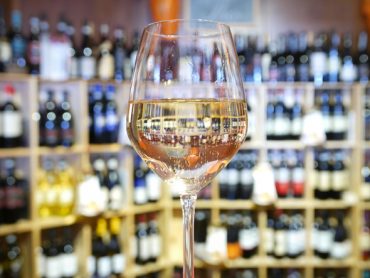In Vino Veritas XL: Aging Barrels
When discussing wine and what differentiates one bottle from another, the three most common topics are grape varietal, place of origin (country, appellation, terroir) and vintage year. From a sales perspective, having confidence in your knowledge of these three will go a long way towards developing a ‘wine story’ to woo and sell to patrons. Just in case those three can’t seal the deal, aging barrels represent a fourth element you can add to this conversation. (Fermenting in barrels is also done but that’s a separate topic from aging.)
After all, aging wine in wood barrels can drastically alter the taste profile and often make the beverage unrecognizable to its un-aged counterpart. Discussing a particular label in terms of its unique aging process (or by talking about this in process terms) is a great way to deepen the guest-staff rapport, especially given that the effect of barreling isn’t common knowledge. Such a chat may or may not lead directly to increased liquor sales on the spot, but it will most certainly augment the overall dining experience. Hence, everyone in the F&B game should know a bit about how wine is aged.
At its most fundamental level, the only three materials for barreling you need to know are stainless steel, American oak and French oak. Stainless steel is the simplest, imparting minimal flavor and allowing the liquid to stew in its chemicals. The other two, however, are slightly porous, allowing for slow evaporation (concentration of flavor and aroma profiles) and oxygenation (softening the taste of the tannins). Oak is unique in this porous-yet-watertight characteristic, making it the ideal wood for years-long wine maturation.
Next of importance is how much the coopers ‘toast’ the barrels – that is, how much they burn or char the insides. This is done to help shape the wood but more so to impart flavor to the wine as the reactive liquid slowly chews away at its inner lining over months or years and incorporates chemicals from the oak into its flavor profile. A good barrel can withstand about three years of leaching from wine before it becomes inert.
Of course, the flavors of toasted American and French oak differ greatly, with the former considered to impart bolder, more intense flavors and the latter often likened to sweeter tasting notes. Think butter, caramel, cinnamon and vanilla additions for whites and coffee, smoke and spice for reds. As barrels can impart stronger flavors, this becomes an issue when dealing with patrons who prefer mellow, sweeter wines. In these cases, a steel cask sauvignon blanc is better than a two-year, American oak chardonnay, while a pinot noir would obviously be preferable to a Bordeaux aged in French oak.
As someone who has long understood the wooden aging process and its effects, the use of American oak, French oak or steel is second nature. However, if your palate is underdeveloped, the best way to learn to distinguish these discrepancies is to complete a vertical tasting of the same wine matured under the three different conditions. And in terms of conveying this knowledge to the customer, it may be best to give your servers a quick elevator pitch on how aging barrels can let a freshly fermented wine evolve into something else entirely.
(Article by Larry Mogelonsky, published in HOTELS Magazine on November 17, 2015)




